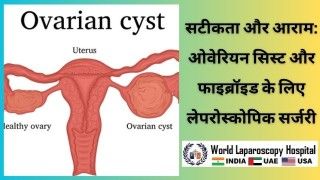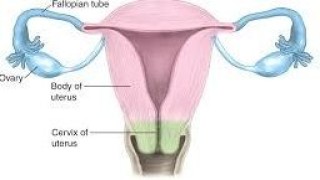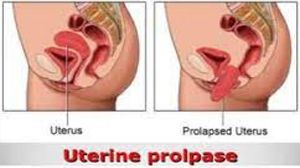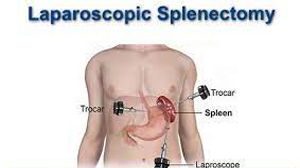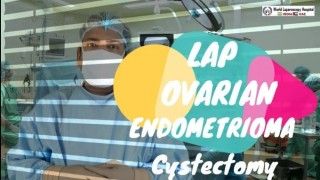Laparoscopic Salpingo-oophorectomy for Recurrent Endometrioma
Add to
Share
1,540 views
Report
1 year ago
Description
Introduction Laparoscopic salpingo-oophorectomy is a minimally invasive surgical technique used to remove one or both ovaries and fallopian tubes. This procedure is often necessary for patients suffering from recurrent endometrioma, a chronic condition where endometrial tissue grows outside the uterus, frequently on the ovaries, leading to cysts, pain, and potential infertility. Mastering this surgical technique can significantly improve patient outcomes, reduce recovery times, and enhance overall quality of life. This guide, supplemented by a comprehensive video tutorial, aims to provide a thorough understanding of the procedure, from preoperative preparation to postoperative care. Preoperative Preparation Patient Assessment Before proceeding with laparoscopic salpingo-oophorectomy, a thorough assessment is crucial. This includes a detailed medical history, physical examination, and imaging studies such as ultrasound or MRI to evaluate the extent of endometrioma involvement. Blood tests to check for anemia, infection, and other potential complications are also necessary. Informed Consent Discussing the procedure, potential risks, benefits, and alternatives with the patient is vital. Ensure that the patient understands the nature of recurrent endometrioma and the rationale for choosing laparoscopic salpingo-oophorectomy. Surgical Planning A well-thought-out surgical plan is essential. This includes determining the optimal port placement, anticipating potential difficulties such as adhesions, and planning for the possibility of conversion to open surgery if needed. The Surgical Procedure Anesthesia and Patient Positioning The procedure is performed under general anesthesia. Position the patient in a lithotomy position with slight Trendelenburg tilt to improve access to the pelvic organs. Port Placement Typically, four ports are used: 1. Umbilical port: For the laparoscope, providing a clear view of the pelvis. 2. Suprapubic port: For primary surgical instruments. 3. Two lateral ports: For auxiliary instruments, allowing better manipulation and dissection. Exploration and Adhesiolysis Upon entering the abdominal cavity, conduct a thorough exploration of the pelvis and abdomen. Adhesions are common in patients with recurrent endometrioma and may need to be carefully dissected to access the ovaries and fallopian tubes. Cyst Aspiration and Oophorectomy If a large endometrioma cyst is present, aspiration may be necessary to facilitate dissection. The ovary and fallopian tube are then carefully dissected from surrounding tissues, taking care to minimize damage to adjacent structures. Hemostasis is achieved using bipolar coagulation or harmonic scalpel. Specimen Retrieval The removed ovary and fallopian tube are placed in an endoscopic retrieval bag and extracted through one of the ports, typically the umbilical or suprapubic port. Closure After ensuring hemostasis and irrigation of the pelvic cavity, the ports are closed with sutures or surgical staples, and the skin incisions are dressed. Postoperative Care Immediate Postoperative Management Monitor the patient in the recovery room until they regain full consciousness and stable vital signs. Pain management, usually with non-steroidal anti-inflammatory drugs (NSAIDs) and opioids as needed, is crucial. Discharge and Follow-up Most patients can be discharged within 24 hours post-surgery. Provide detailed postoperative instructions, including wound care, activity restrictions, and signs of potential complications. Schedule a follow-up appointment within one to two weeks to monitor recovery and discuss pathology results. Potential Complications and Management Intraoperative Complications - Hemorrhage: Manage with careful dissection and use of hemostatic agents. - Bowel or Bladder Injury: Promptly recognized and repaired intraoperatively. Postoperative Complications - Infection: Treated with antibiotics. - Venous Thromboembolism: Prevent with early mobilization and prophylactic anticoagulation if indicated. Conclusion Laparoscopic salpingo-oophorectomy is a vital skill for gynecologic surgeons, particularly in the management of recurrent endometrioma. This detailed video guide aims to enhance the surgeon’s proficiency in this procedure, ensuring optimal patient outcomes. Mastery of this technique requires a thorough understanding of pelvic anatomy, surgical principles, and meticulous operative execution. By following the steps outlined in this guide, surgeons can confidently perform laparoscopic salpingo-oophorectomy, providing significant relief and improved quality of life for their patients suffering from recurrent endometrioma.
Similar Videos


